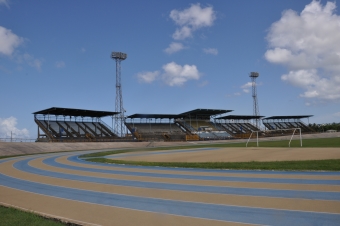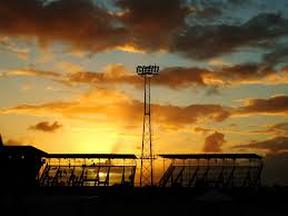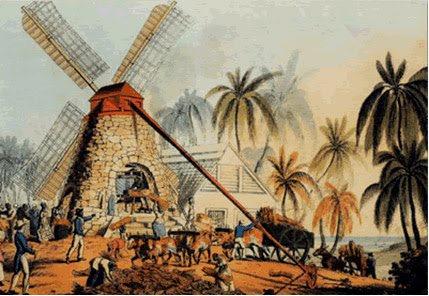JCI Barbados Milestones
JCI Barbados has been established for 64 years, here is a list of the Chapter's milestones over the years.
The National Stadium
|
|
The National Stadium of Barbados, all five stands, 500 meter cycling track, athletic track and surroundings situated at Waterford, St. Michael was built between 1968 to 1970, and served as the major training, recreational and showcasing facility for hundreds of Barbadian and International athletes over the years.
To the average Barbadian, the building and strategic location of this facility might not be readily known. In fact, only those of a bygone generation intimately knowledgeable of the details can conclusively relate to its origins. The National Stadium was originally not slated to be built at Waterford but Weymouth, (opposite the Globe theatre), however the foundation there contained water and was quite soft precluding any large scale building activity at the time. The Government of the day was able to acquire a portion of land at the present Waterford site donated by the Jaycees (Junior Chamber of Commerce) an international organization of young men and women who joined together to improve their lives and their communities. Funds were acquired through the Jaycees Radio Bingo games. To this day a commemorative gate for the Jaycees is affixed on the Stadium grounds, this was formally done on 11th July, 1997. Capital construction cost, not including the cost of land, was approximately two million dollars (BDS $2,000,000) financed as follows : (a) Grant from the Jaycees in the sum of four hundred and fifty thousand ($450,000) (b) Grant from the Government of Barbados and loans from Barclays Bank |
The Origin of Carnival in Barbados (Also known as the Crop Over Festival)
|
|
If you’ve ever participated in Crop Over and crossed the stage before the judges then chances are you have exited the National Stadium through the Jaycees Gate. The contribution of the Bridgetown Jaycees to the fabric of our life as we know it, can be seen again through its introduction of the event that is now known as Crop Over and celebrated worldwide.
But first we start at the beginning. Crop Over is essentially a merger of two cultures, English and West African, and is a uniquely Barbadian festival. The original festivals were celebrated on individual plantations or groups of plantations, where activities were concentrated in the mill-yard - the first site involved in the harvesting of the sugar crop. The activities included the delivery of carts loaded with the sugar cane crop, a big feast, stilt walking, music, dancing and last but not least 'Mr. Harding', an effigy made of cane trash stuffed into an old pair of trousers and coat, with a top hat on its 'head'. The effigy of Mr. Harding symbolized the period between sugar crops, when employment was difficult to obtain and money was scarce. The time was referred to as 'Hard Time', so that the crop time and the hard time divided the Barbadian year, quite similar to the way the year is divided in countries with temperate climates such as spring and winter. These festivals, hosted at the culmination of the harvest, continued until the 1940s. The crop over celebrations began on a national level in 1957, when the Barbados Junior of Commerce (Bridgetown Jaycees) introduced a carnival at Kensington Oval to fill the void left by the cancellation of the crop over festivals in the 1940s. This annual carnival coincided with the calendar dates of the Trini carnival and essentially became a Bajan replica and comprised of float parades, masquerade bands, band clashes, steel pan, calypso tents and beauty pageants. It ran until 1964 when it was stopped, citing the "behaviour" of the masqueraders on the streets. This initiative was again revived in 1973 through an annual arts festival in 1973, which became the precursor to the National Independence Festival of Creative Arts - NIFCA. Under the direction of Elombe Mottley, a planning committee and the Board of Tourism, Crop Over was revived to attract tourists to the island during the 'slow season'. The production of Crop Over changed hands a few times over the years, but finally came to rest with the National Cultural Foundation upon it establishment in 1983. What started off as a carnival to address a void in the community, has evolved into Barbados' biggest national festival similar to Carnival in Brazil and Trinidad over a three month period. And that is what JCI Barbados is all about, finding the niche project to address the needs of the community. Additional information is available: http://www.nationnews.com/articles/view/the-al-gilkes-column-1950s-and-the-carnival-band-craze/ *Special thanks to the National Cultural Foundation of Barbados for capturing the essence of the Jaycees Carnival. These images of the Jaycees Carnival are courtesy of the National Cultural Foundation, Barbados. |
© Copyright Junior Chamber International Barbados 2022





